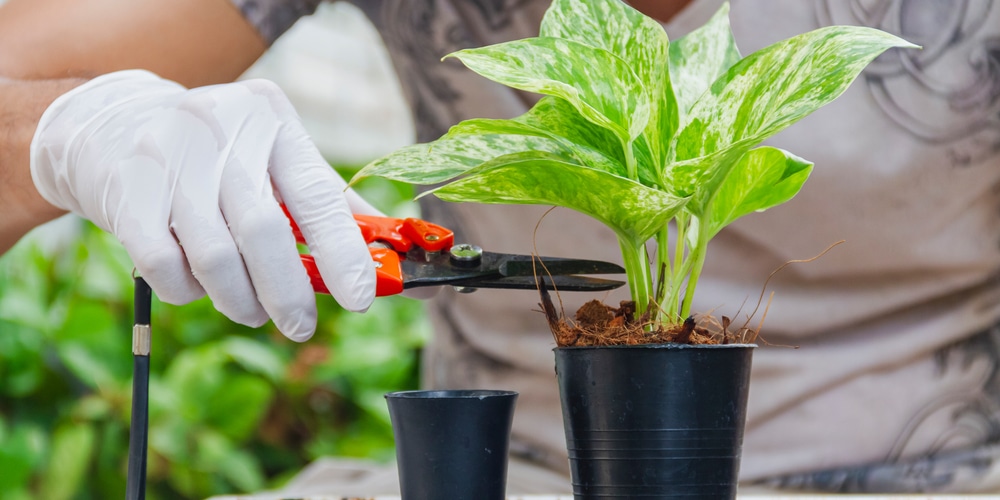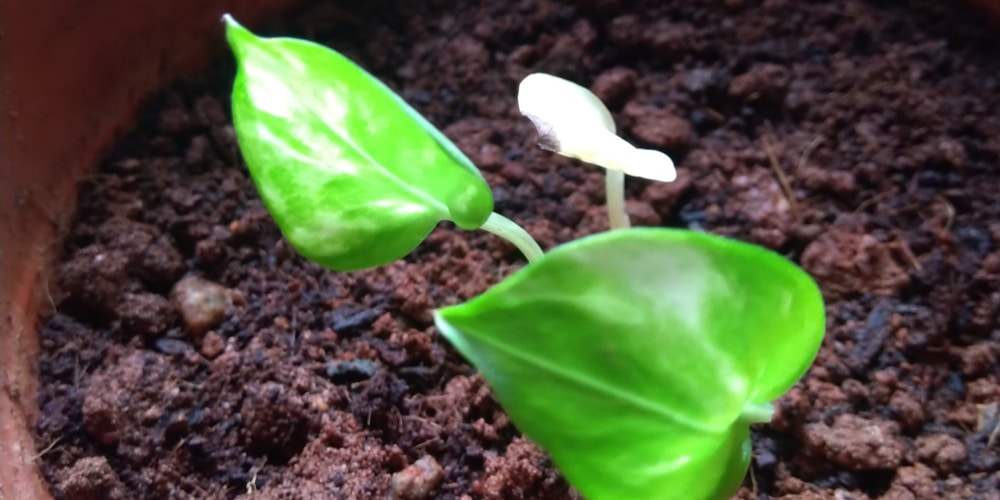It’s easy to fall in love with a newly bought pothos plant- they’re usually bushy, compact and full of life and character! After a few months though, you’ll find that your favorite plant has become a shell of its former self. The straggly vines are long and sparse, and there are spaces in-between. So, how to make pothos fuller and bushier?
1. Relocate It to a Brighter Spot
It’s not a secret that plants love sunlight- if given a choice, they’d bask under it all day long!
However, for species like the pothos they can get by with only a bit of light. But keep them in the dark for a long time and they will lose their bushiness and ‘stretch’ their vines in order to get more light.
Sunlight is food for the pothos and it helps them grow and make more leaves and stems. But there’s a thing as too much sun- pothos are like vampires in that their leaves will get scorched in direct sunlight.
So, the best you can do is pick a bright location that gets indirect sunlight most of the day. A window facing the west, east or south should suffice. Ideally, it should be a place where your pothos gets bright light throughout the day.
2. Keep It Hydrated
Your pothos may have been constantly thirsty, which means it doesn’t grow to its full and lush potential.
Check your plant for signs of underwatering, such as brown edges, curling, and yes, bald spots and stringy stems. Unless you’re exposing it to direct sunlight this is your pothos telling you to ‘feed me’.
Simply watering whenever you remember to do so isn’t enough, or your plant won’t regain its fullness. Fortunately, it’s pretty easy to establish a routine your pothos would like.
The species doesn’t necessarily require constantly moist soil. The only time it needs a drink is when the medium is dry. Do a simple test with your finger- touch the surface of the soil and see if some of it sticks. If yes, then your plant can do without water.
When it’s time to water, make sure to provide generously and let the water run through the bottom of the pot. Depending on the medium and how big the pot is, you may not need to water again in a week or two.
You can also check the leaves for signs that it needs watering- does it curl inward, or is it all wrinkly? If yes, then fill er up!
3. Give It a Nice Pruning
Pruning is an age-old method of bringing out the best in plants.
The process is a bit complicated and will require several common gardening tools. However, once you master the basics you can cut with confidence and your plant will be happier.
Pruning is when you purposely take off the top growth in order to encourage the plant to branch out and thus, become bushier. Not doing this allows the pothos to continue lengthening its current vines and you’d end up with long but sparse growth.
It may be counterintuitive to cut off the few precious stems you have left, and you won’t achieve the desired look immediately. However, you can take that leap of faith since it’s a proven technique for fuller-looking plants.
So, in order to get more growth in the middle, you can chop off the stems at the side and those trailing downwards. Use a sterilized pair of shears or scissors and cut off the stem that’s under a ‘node’, or an area where a leaf grows.
Don’t prune too much or it’ll be a long time before you can see a fuller and bushier pothos.
4. Give It Some Fertilizer
Technically speaking, pothos do not require too much fertilizer. They’re easygoing plants that don’t need too much sunlight either.
However, there will be a time when your plant can benefit from a dose of fertilizer, especially during the growing and warm seasons. This will help them grow to their full potential and reward you with a robust and healthy-looking plant.
The best fertilizer to give your pothos would be liquid seaweed or organic compost, but any other you have on hand will do. Solid fertilizers will require you to sprinkle them on top of the soil a few inches away from the plant, then mixing it in and watering.
It’s recommended to always follow the directions on the label for liquid fertilizers. To keep it safe you can dilute or mix up the fertilizer to only 50% strength to avoid the danger of burning up the plant’s roots.
Once a month of fertilizing should be fine for small and medium-sized pothos. You’ll know they like it when your plant rewards you with new growths in a short span of time.
5. Protect It From the Elements
Lastly, you’ll need to protect your pothos from extreme temperatures and pests.
One way to know if your pothos is stressed is to check the leaves- if it’s limp and shriveled, then you’re probably exposing it to extreme heat. Move it to a shadier location and remove the dead or dried leaves.
Pothos doesn’t like too cold either, so keep it indoors when winter comes and away from drafts.
Also, keep it well-watered during hot days and less when the days are shorter and the weather colder. Hold off on the fertilizer during dormancy as it will harm the pothos more than it will help them.
Making Your Pothos Bushy and Full Is Not Hard
With luck and helpful information, you can turn back the hands of time and return your pothos to a fuller and bushier state.
Once your plant regains its bushiness you can repeat the steps as necessary. Doing this regularly won’t harm the plant- in fact, constant pruning makes for more vigorous growth and side-shoots you’ll definitely like.
As a side note, don’t fertilize too much or it will be detrimental to your pothos’ growth and health. Don’t forget to repot every year or two so it won’t be root-bound and stunted.
You may also like: How to Plant Succulents in Glass Containers




